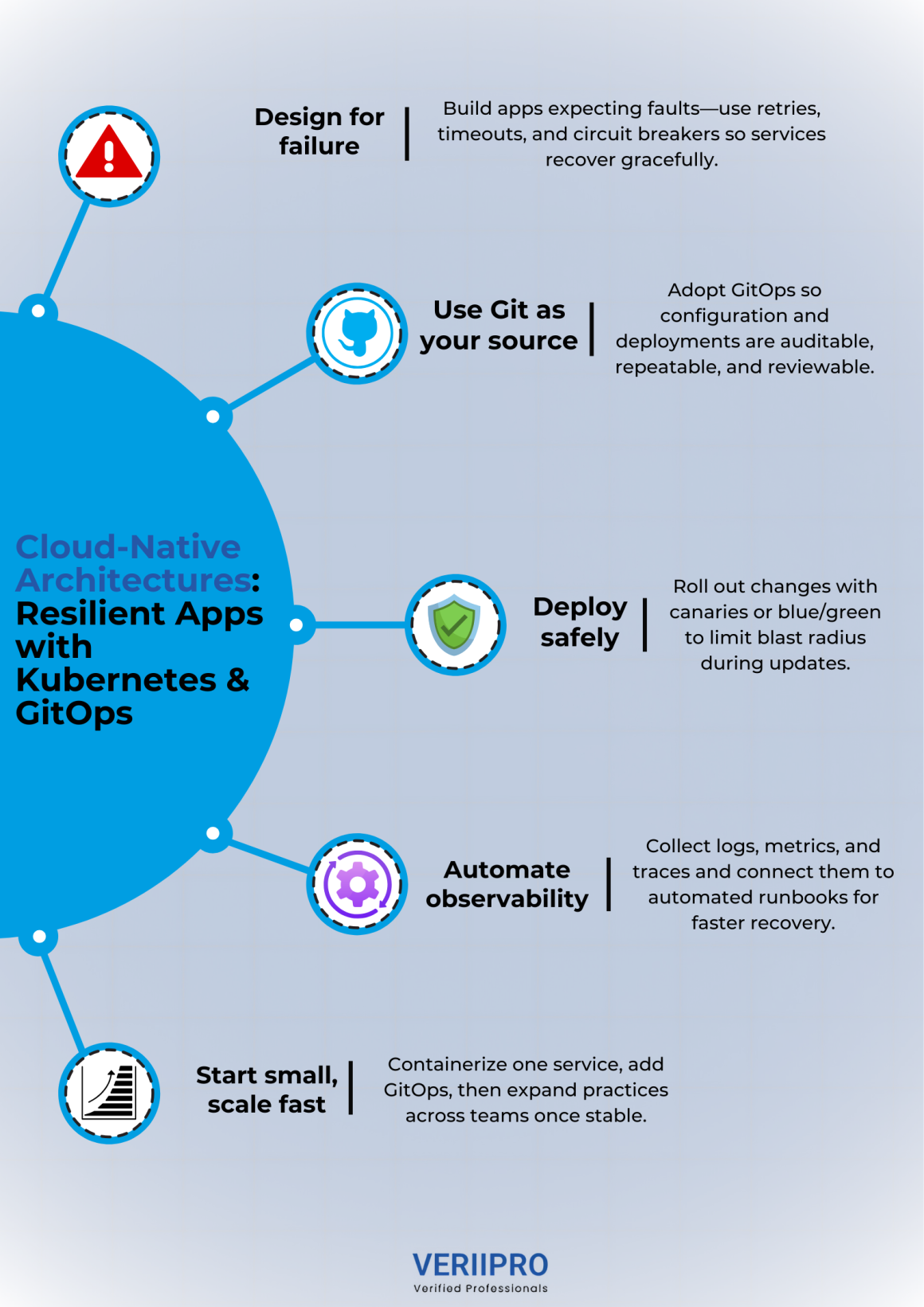Cloud-native architectures let teams build resilient, scalable applications by combining container orchestration with best-practice delivery workflows. This approach emphasizes microservices, automation, and observable systems so apps recover faster from failures and scale on demand—the CNCF annual survey shows strong industry adoption that makes cloud-native a practical choice for modern teams.

Why “cloud-native” matters for resilience
Cloud-native apps are designed for change: they assume failures happen and bake recovery into every layer. Teams minimize blast radius by running services in containers, automating rollout strategies, and using orchestration to restart unhealthy components. This shift from fragile monoliths to resilient, observable services reduces downtime and improves user experience.
Kubernetes as the control plane
Kubernetes provides the primitives teams need for resilient operations: self-healing pods, automated scaling, and declarative desired-state management. These control loops let operators focus on policies and observability rather than manual fixes, making it easier to roll back or replace failed components.
GitOps: single source of truth
GitOps treats Git as the canonical record for both application and infrastructure state, enabling safe, auditable, and repeatable deployments. With Git as the source of truth, teams get version history, change reviews, and automatic reconciliation between declared and actual cluster state—speeding delivery while reducing human error.
Deploy safely with modern strategies
Minimizing user impact during updates is critical. Techniques like rolling updates, canary releases, and blue/green deployments let teams validate changes against a subset of traffic before full rollout. Canary releases reduce risk by exposing new code to a small audience first, while blue/green enables quick rollback by switching traffic between environments.
Design for failure: resilience patterns
Resilient systems use patterns like retries, timeouts, and the circuit-breaker to manage transient failures and protect downstream services. Combining exponential backoff retries with a circuit breaker prevents cascading failures by stopping repeated attempts against an unhealthy service; these patterns belong both in service code and in platform-level automation.
Observability and automated remediation
Logging, metrics, and distributed tracing give teams the visibility needed to detect anomalies and measure user impact. When observability ties into automation—alerts trigger runbooks or automated rollbacks—mean time to recovery drops substantially. Integrate monitoring with your GitOps workflows so operational actions are traceable and reproducible.
Security and compliance in a cloud-native world
Security must be woven into the pipelines: image scanning, policy-as-code, and admission controls help block risky changes before they reach production. GitOps makes audits easier because every change goes through Git and is visible in the commit history—adopt least-privilege principles and automate checks instead of relying on manual approvals.
Practical roadmap for teams getting started
- Containerize a single service and run it in a dev cluster.
- Adopt GitOps so manifests live in Git and a reconciler applies changes.
- Add observability (logs, metrics, traces) and author simple alerts.
- Choose a deployment strategy (rolling, canary, or blue/green) and automate it.
- Introduce resilience patterns in code (retry, timeout, circuit) and test failure scenarios.
Common pitfalls to avoid
- Treating Kubernetes as a straight “lift-and-shift” target without re-architecting app design.
- Skipping automation on deployments—manual steps cause delays and errors.
- Lacking observability before high-traffic launches; you can’t fix what you can’t see.
The business upside
Cloud-native practices improve developer velocity and reduce outages by standardizing how teams deliver and operate software. Organizations investing in platform engineering and GitOps often see faster, safer releases and clearer audit trails—advantages that show up in industry reports and adoption studies.
Final Thoughts
Cloud-native architectures powered by Kubernetes and GitOps are practical, production-ready technologies; engineers who build hands-on projects, master observability, and learn resilient deployment patterns are in demand. If you want help turning those skills into job opportunities, VeriiPro connects candidates with roles, learning resources, and recruiter support.









